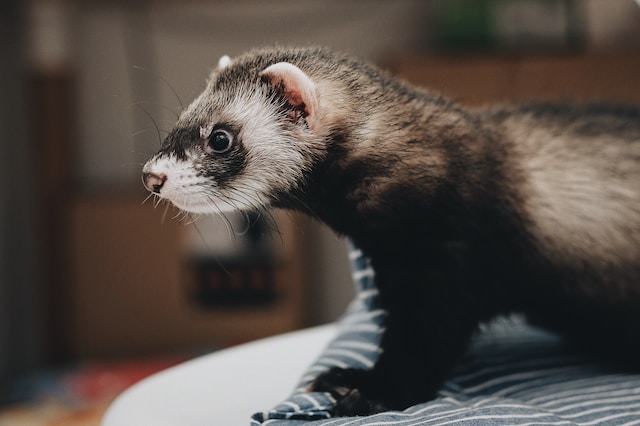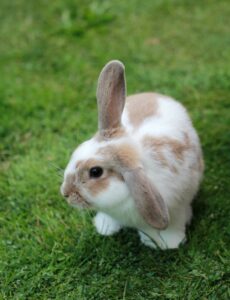
Ferret Training Tips and Tricks for a Well-Behaved Pet
Contents
- 1 Introduction
- 2 Being a ferret owner isn’t quite like having a cat or dog, but it’s still a rewarding experience and can be great for your mental health.
- 3 As with any pet, ferrets require training.
- 4 The best way to train your ferret is by using positive reinforcement.
- 5 Make sure your ferret has plenty of toys to play with and chew on, so he doesn’t get bored while you’re gone.
- 6 Ferrets are natural predators, so it’s important you keep an eye on them when they’re playing with other animals or household items.
- 7 Ensure that your ferret has a proper habitat that includes everything he needs — such as food bowls and water bottles — before introducing him to his new home.
- 8 Provide your ferret with plenty of places to hide and sleep, so he feels comfortable in his surroundings when you aren’t home.
- 9 Taking care of a pet takes work and patience, but it’s definitely worth the effort!
- 10 Conclusion
Introduction
If you’re thinking about adopting a ferret, you’ll want to know how to properly train it. Ferrets, while adorable, are not necessarily the easiest pets to care for, so getting your ferret used to being around people and other animals can be a challenge. However, with the right tools and techniques at hand, you’ll soon find that having a ferret isn’t as difficult as it first seems!
Being a ferret owner isn’t quite like having a cat or dog, but it’s still a rewarding experience and can be great for your mental health.
Ferrets are social animals and need human interaction, which makes them an excellent choice for people who want to get out more often but don’t have time for the responsibilities of owning other pets. They’re also very intelligent animals that respond well to training and are known for being playful little critters!
Ferrets are known for being mischievous little critters, so if you plan on getting one as your pet (or even just visiting one), here are some tips on how best to train them:
As with any pet, ferrets require training.
Training is important for any pet. Ferrets are no different, and they will be happier and better behaved when trained properly. Training also helps you bond with your ferret, which can make both of your lives much more enjoyable!
The best way to train your ferret is by using positive reinforcement.
Positive reinforcement means rewarding your ferret for good behavior, which can be anything from a treat or playtime to simply getting attention from you. Positive reinforcement is more effective than punishment because it helps build trust between you and your pet, making them more likely to listen when you ask them something in the future.
Negative reinforcement involves taking away something bad (like being separated from their cage) if they do something right (like going inside). This doesn’t teach them what’s wanted–it just makes them afraid of losing things they already have!
Make sure your ferret has plenty of toys to play with and chew on, so he doesn’t get bored while you’re gone.
Ferrets love to hide in small places and play with their food before eating it, so they may get bored if they don’t have anything else to do while you’re not home. In addition, ferrets need plenty of space–they can get very territorial if they don’t have enough room or aren’t able to run around outside often enough!
Finally, ferrets need regular exercise; try taking yours on walks around the neighborhood or playing fetch at the park (but only if allowed by local laws).
Ferrets are natural predators, so it’s important you keep an eye on them when they’re playing with other animals or household items.
They can be destructive and may try to eat the wrong things if they aren’t properly trained.
The best way to train a ferret is by using positive reinforcement: reward your pet for good behavior instead of punishing them for bad behavior. Make sure your ferret has plenty of toys to play with and chew on that won’t hurt anyone if accidentally ingested (like rawhide chews).
Ensure that your ferret has a proper habitat that includes everything he needs — such as food bowls and water bottles — before introducing him to his new home.
To ensure that your ferret is comfortable in his new home, make sure he has everything he needs to be happy and healthy.
- A place to sleep: Ferrets are nocturnal animals, which means they sleep during the day and are active at night. They also love having burrows or hiding places where they can sleep in peace.
- Food bowls: Ferrets need fresh water every day in order to stay hydrated and healthy. You’ll also want to provide them with a high-quality food mixture made specifically for ferrets (you’ll find these at pet stores).
- Toys: These little guys love playing with toys — just like cats! Make sure you have plenty on hand so your pet never gets bored while living indoors
Provide your ferret with plenty of places to hide and sleep, so he feels comfortable in his surroundings when you aren’t home.
This can be accomplished by providing boxes, tunnels and hammocks for him to crawl into.
- Make sure the hiding place is large enough for the ferret to climb into comfortably; otherwise he’ll just move around inside it instead of settling down for a nap.
- Also make sure that any openings are secure so they won’t accidentally escape through them!
Taking care of a pet takes work and patience, but it’s definitely worth the effort!
Ferrets are a lot of fun to be around, but they’re also a lot of work. Before you bring your ferret home, make sure you know what you’re getting into by reading our tips below!
- Know how much time your pet will need. Ferrets are very active animals who need plenty of care and attention each day. If you can’t commit to spending at least an hour a day with them (and maybe even more), it may not be worth getting one in the first place.
- Get all necessary supplies before bringing your new friend home – including food bowls and water bottles – so that there aren’t any surprises later on down the road when things start getting messy (which they will).
Conclusion
If you’ve decided that a ferret is the right pet for you, then congratulations! You’re about to embark on an exciting journey with your new furry friend. But before you get started on training your ferret, make sure he has everything he needs in his habitat — like food bowls and water bottles. Once everything is set up, start by introducing him to his new home slowly and gently so he feels comfortable while exploring around on his own time (and don’t forget those toys!). Finally, use positive reinforcement when teaching him commands like sit or stay so that he’ll listen when asked nicely.



Average Rating